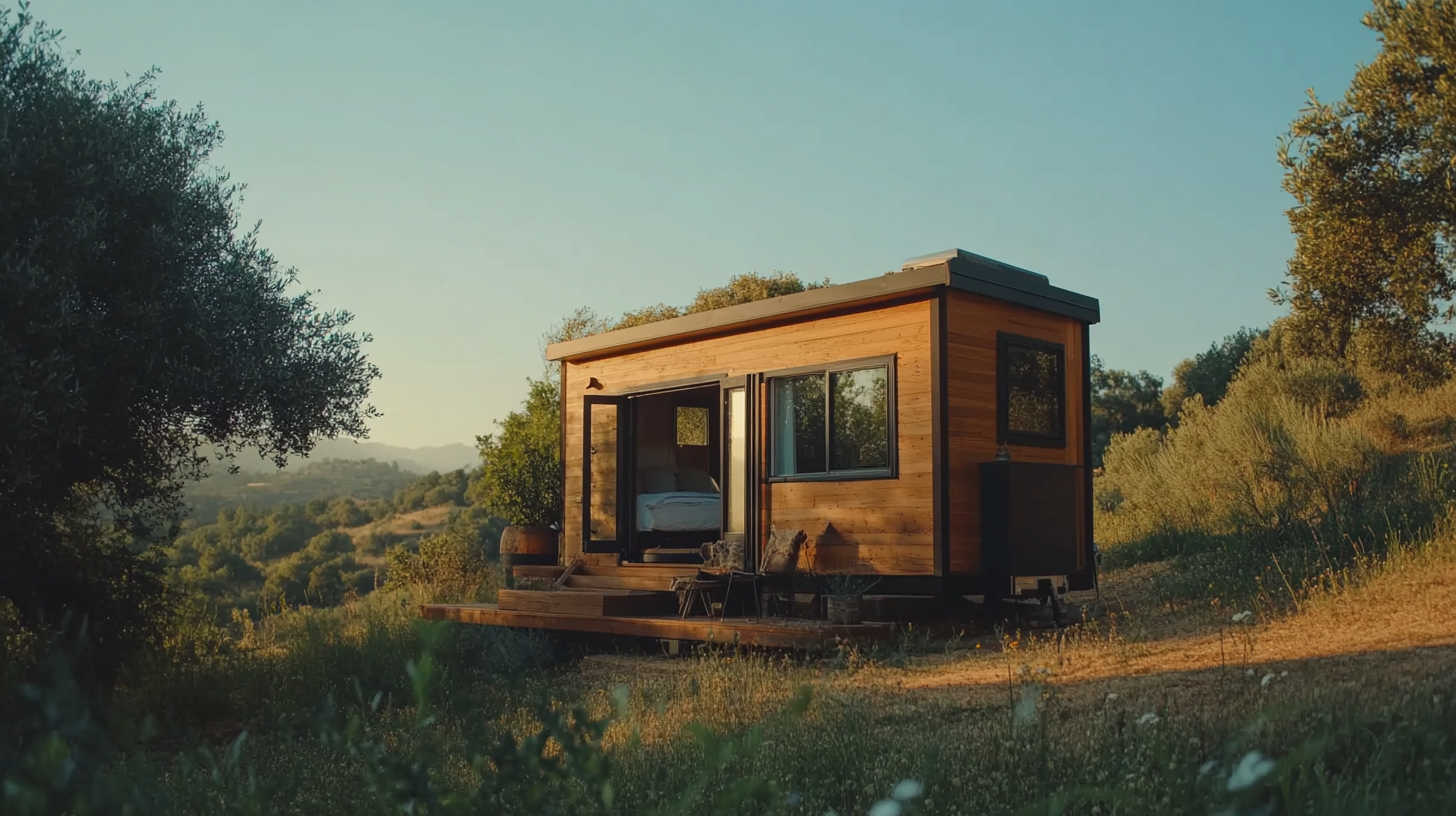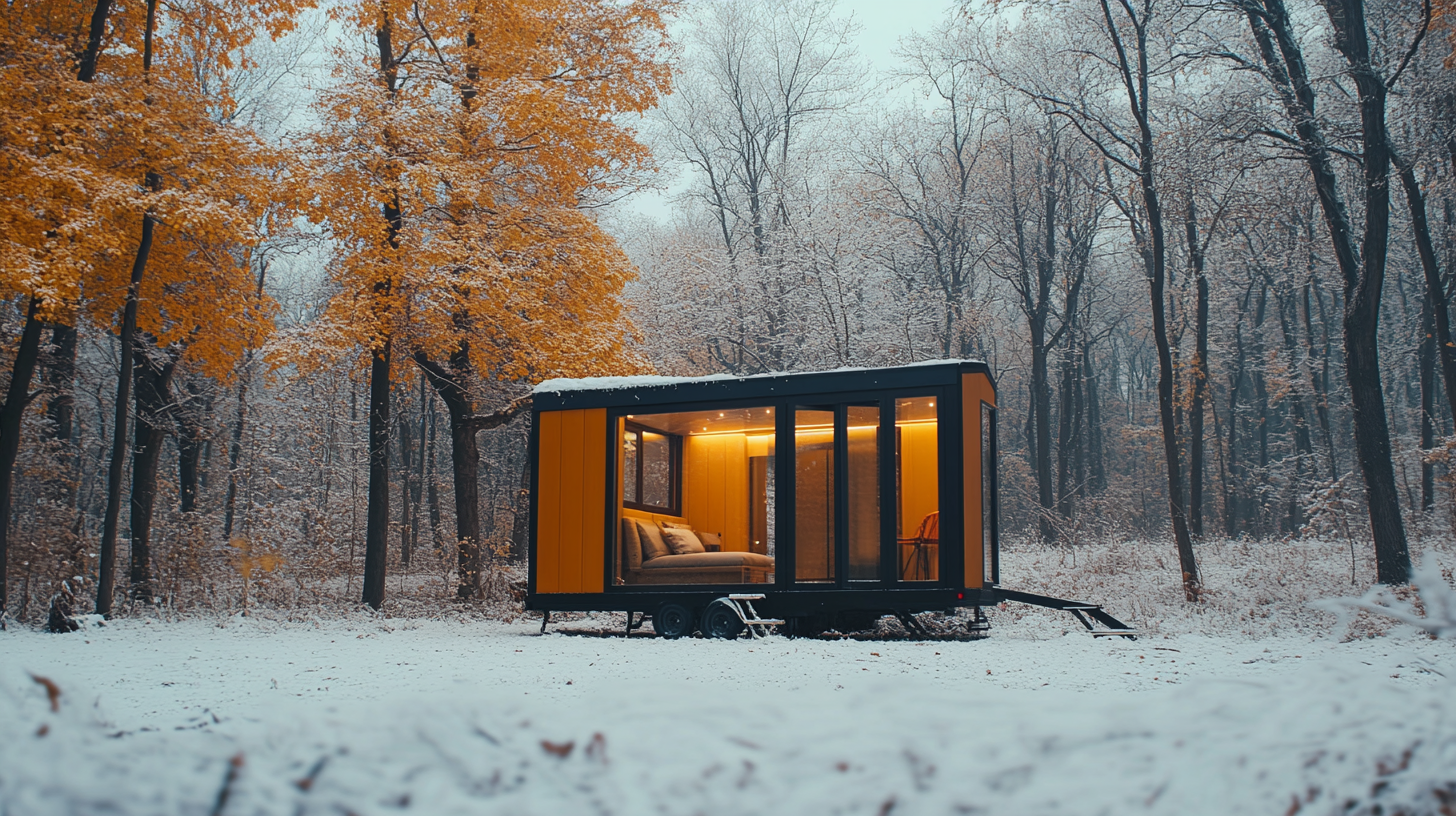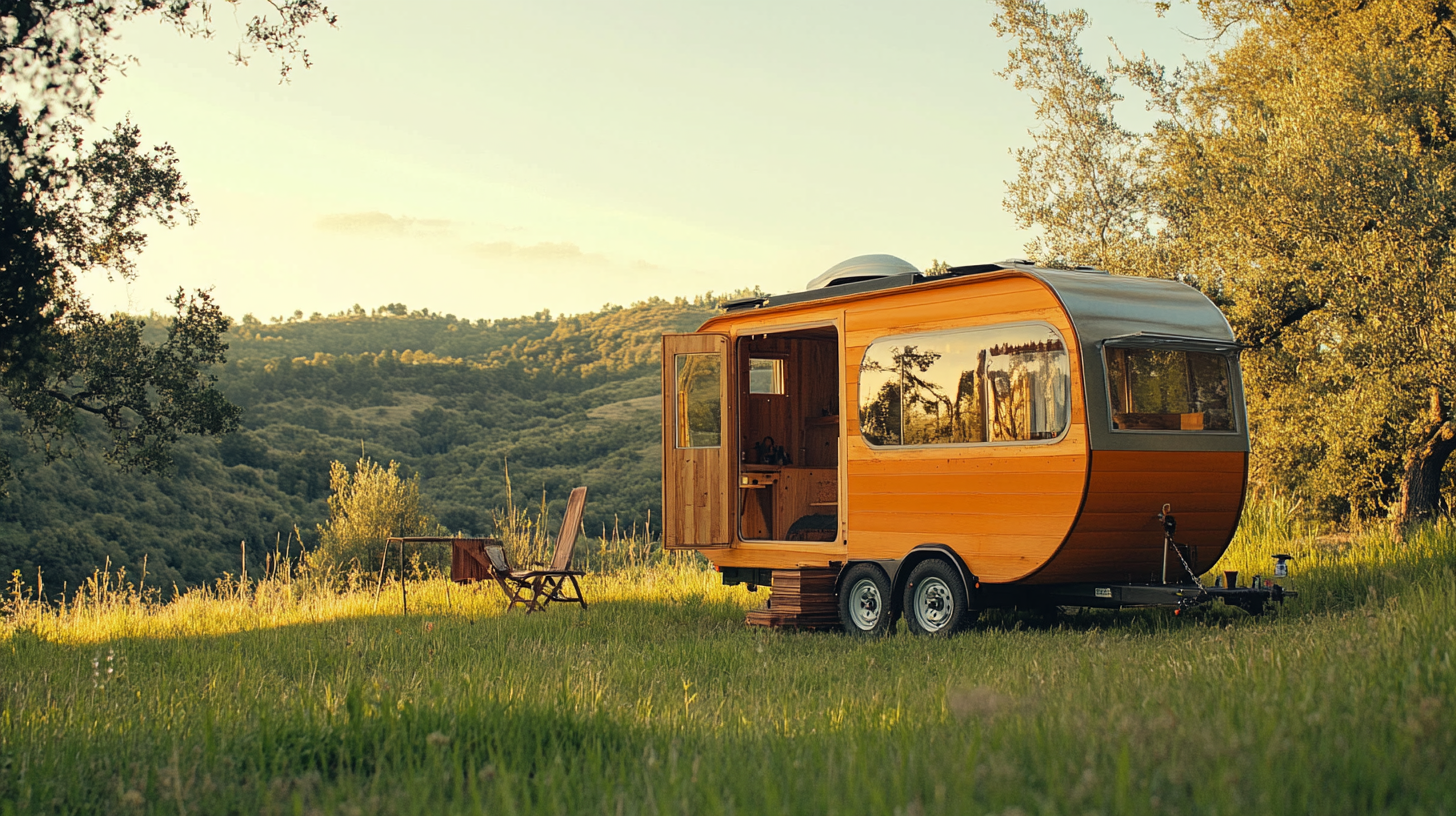
News
Exploring the Benefits of Living in a Tiny House Capsule Lifestyle
The trend of downsizing and minimalist living has gained substantial momentum in recent years, with the "Tiny House Capsule" lifestyle emerging as a compelling alternative to traditional housing. According to the American Tiny House Association, approximately 68% of tiny house owners express a greater sense of freedom due to reduced financial burden and a simplified lifestyle. Additionally, a report by the National Association of Realtors reveals that millennials, who prioritize sustainability and affordability, are increasingly drawn to small living spaces, with one-third of this demographic considering tiny homes as a viable option for their future. Living in a Tiny House Capsule not only promotes a minimalist approach, reducing clutter and stress, but also significantly lowers energy consumption, aligning with contemporary environmental concerns. As more individuals and families seek to reclaim their time and resources, the Tiny House Capsule lifestyle stands out as a transformative solution for modern living.

Understanding the Tiny House Movement: A Shift in Lifestyle Choices
The tiny house movement represents a transformative shift in lifestyle choices, emphasizing simplicity, sustainability, and conscious living. As more individuals, especially from Generation Z and millennials, embrace eco-friendly practices, tiny homes have emerged as a viable solution to modern housing challenges. These compact dwellings often come equipped with innovative designs that prioritize functionality without compromising comfort. For instance, custom models can support a downsized lifestyle, offering all the essential amenities in a smaller footprint.
When considering the transition to tiny living, it's essential to adopt a minimalist mindset. One tip is to declutter your belongings before moving into a tiny house; only keep items that hold genuine value or utility in your daily life. Additionally, designing flexible spaces can enhance your living experience—think multi-purpose furniture that can adapt to various needs. Lastly, consider exploring off-grid options to further reduce your environmental impact and enhance self-sufficiency. Embracing the tiny house lifestyle allows for a harmonious balance between personal well-being and environmental stewardship, making it a meaningful choice for the conscientious homeowner.
Benefits of Living in a Tiny House Capsule Lifestyle
Designing Minimalist Spaces: Maximizing Functionality in Tiny Houses
The tiny house movement emphasizes the beauty of minimalist living, where every square foot counts. Designing minimalist spaces in tiny houses involves thoughtful planning to maximize functionality without compromising comfort. Utilizing multi-functional furniture is essential; for instance, a sofa bed or a foldable dining table can turn your living area into a versatile space that adapts to your needs.
One effective tip is to embrace vertical storage solutions. Shelves that reach up to the ceiling can hold books, decor, and essentials, while hooks and pegboards can keep frequently used items off surfaces. This organization not only saves space but also adds a personal touch to your home. Consider choosing furniture that incorporates hidden storage, such as ottomans that open up or beds with built-in drawers, to maintain a clutter-free environment.
Another crucial aspect is maximizing natural light. Large windows can create an illusion of space and help your interior feel more open. Use light-colored materials and mirrors to reflect light, making the area feel more expansive and inviting. These design principles will not only enhance the aesthetic of your tiny house but also promote a practical and enjoyable living experience.

Financial Freedom: How Tiny Living Reduces Expenses and Debt
Embracing the tiny house capsule lifestyle offers remarkable opportunities for financial freedom. With the rising cost of living, many are finding solace in smaller, more efficient living spaces that drastically reduce monthly expenses. Nobody can deny that housing is one of the largest expenses in anyone's budget. Opting for a tiny house not only minimizes mortgage or rental payments but also slashes costs associated with utilities and maintenance. This economical shift encourages individuals to experience a more liberated financial state, allowing them to allocate funds toward savings, travel, or investing in experiences rather than material possessions.
Moreover, tiny living promotes a minimalist mindset, which further aids in reducing debt. By eliminating unnecessary purchases and focusing on essentials, residents can break free from the cycle of consumption that often leads to financial strain. Tiny house dwellers often report feeling less pressure to keep up with societal expectations, which can lead to harmful spending habits. Instead, they cultivate a lifestyle of intentionality, leading to greater satisfaction and a more sustainable approach to personal finance. This redefined relationship with money not only enhances life quality but also sets the stage for a debt-free future.

Sustainability Factors: Eco-Friendly Living in a Tiny House
Living in a tiny house not only offers a minimalist lifestyle but also significantly contributes to eco-friendly living. One of the primary sustainability factors associated with tiny homes is their reduced energy consumption. With smaller spaces to heat and cool, residents often find their energy bills considerably lower than those of conventional houses. Additionally, many tiny house owners incorporate renewable energy sources such as solar panels, further minimizing their carbon footprint.
To enhance sustainability in a tiny house, consider using reclaimed materials during the construction process. This not only reduces waste but also adds unique character to your living space. Another tip is to embrace a zero-waste lifestyle by implementing composting systems for organic waste, which can also feed your garden if you choose to grow your own produce. This approach not only supports eco-friendly living but also encourages a deeper connection with the environment.
Moreover, being mindful of water usage is crucial in tiny house living. Installing low-flow fixtures and rainwater collection systems can significantly decrease your water consumption. Small changes, such as taking shorter showers and using a composting toilet, can lead to a more sustainable way of living, allowing you to enjoy the benefits of a tiny house while contributing positively to the planet.
Exploring the Benefits of Living in a Tiny House Capsule Lifestyle
This chart illustrates the key benefits of living in a tiny house, focusing on sustainability factors and eco-friendly living. The data compares the environmental impact and lifestyle benefits associated with traditional homes versus tiny houses.
Emotional Well-Being: The Psychological Benefits of Downsizing
The surge in popularity of tiny house living reflects a deeper quest for emotional well-being in our increasingly chaotic world. As reports indicate, workplace stress is at an all-time high, particularly in fields like entertainment where companies are prioritizing mental health resources such as Calm and Headspace. These measures highlight a significant awareness of the psychological toll that stress and instability can have on individuals. Downsizing to a tiny house offers an antidote to this environment, fostering simplicity and reducing the clutter—both physical and mental—that contributes to anxiety.
Moreover, the emotional impact of widespread layoffs in 2023 has left many workers feeling vulnerable and disposable. A study revealed that chronic organizational changes negatively affect the psychosocial work environment, amplifying feelings of burnout and low morale. By intentionally opting for a tiny house lifestyle, individuals can regain a sense of control and stability, cultivating a sanctuary that promotes mental well-being. The minimalist approach encourages mindfulness and self-reflection, giving people the space to heal and reorganize their lives amidst external chaos.
